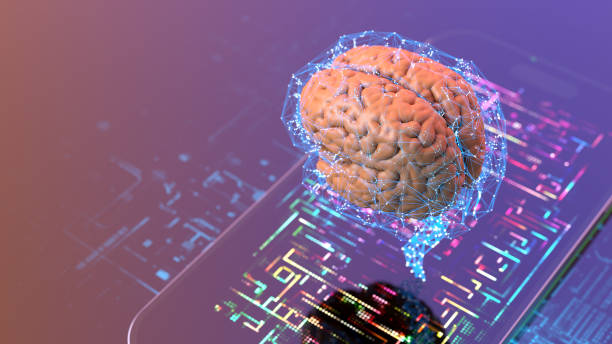What is an AI Robot and what are its applications?
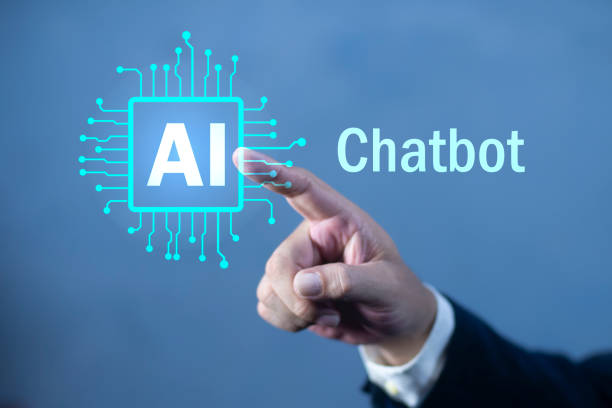
What is an AI Robot and what are its applications?
#AI Robot (Artificial Intelligence Robot) is a combination of two important fields of technology: robotics and artificial intelligence.
Simply put, AI robots are machines that, using artificial intelligence algorithms and models, are capable of performing tasks that typically require human intelligence.
These tasks can include learning, reasoning, problem-solving, natural language understanding, and pattern recognition.
AI robots are rapidly expanding across various industries due to their automation capabilities and high-precision task execution.
The applications of AI robots are vast and diverse.
In industry, AI robots can be used in production lines to perform repetitive and hazardous tasks.
In medicine, they are used for precise surgeries, disease diagnosis, and personalized care.
In customer services, chatbots use AI to answer customer questions and resolve their issues.
Furthermore, in fields such as agriculture, logistics, and even art and entertainment, AI robots play a significant role.
The development of AI robots requires expertise in various fields, including robotic engineering, computer science, statistics, and mathematics.
Researchers and engineers are continuously improving AI algorithms and models so that robots can perform more complex tasks with greater accuracy and efficiency.
For instance, advancements in Deep Learning have made it possible to build robots that can analyze images and videos with high precision and make intelligent decisions.
Do visitors to your online store leave before making a purchase? Worry no more! With RasaWeb’s professional e-commerce website design services, solve the problem of visitors not converting into customers forever!
✅ Significantly increase conversion rates and sales
✅ Unparalleled and engaging user experience
⚡ Contact us now for a free consultation!
Main Components of an AI Robot
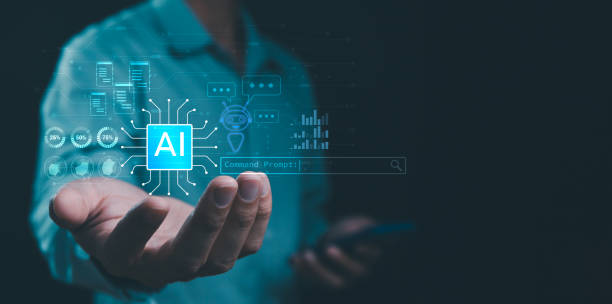
Main Components of an AI Robot
An AI robot consists of several main components, each playing a crucial role in its overall functionality.
These components include the following:
- Hardware: The robot’s hardware includes physical parts such as the body, motors, sensors, and processors.
The robot’s body is usually made of durable and lightweight materials so that it can move in various environments and perform its tasks.
Motors are used to move the robot and perform mechanical activities.
Sensors collect environmental information and help the robot become aware of its status and surroundings.
Processors are also responsible for processing information and executing AI algorithms. - Software: The robot’s software includes AI algorithms, the operating system, and application programs.
AI algorithms enable the robot to learn, reason, and make decisions.
The operating system is responsible for managing hardware resources and running programs.
Application programs are also designed for specific tasks, such as facial recognition, navigation, and motion control. - Sensors: Sensors play a vital role in collecting environmental information.
There are various types of sensors, each designed to collect a specific type of information.
For example, cameras record images and videos, microphones capture sounds, and touch sensors collect information related to contact and pressure.
Other sensors can measure temperature, humidity, light, and other environmental parameters. - Processors: Processors are the robot’s brain and are responsible for processing information collected by sensors and executing AI algorithms.
Processors can be microcontrollers, microprocessors, or single-board computers.
The choice of processor type depends on the complexity of the robot’s tasks and its computational requirements.
Collaboration and coordination among these components are essential for the proper functioning of an AI robot.
With technological advancements, robot components have also improved, and more advanced robots with greater capabilities have been built.
How Does an AI Robot Learn?

How Does an AI Robot Learn?
Learning is one of the most important features of an AI robot.
Robots are able to improve their performance based on experience using Machine Learning algorithms.
There are three main methods for learning in AI robots:
- Supervised Learning: In this method, the robot is trained using labeled data.
Labeled data includes desired inputs and outputs.
The robot attempts to find a relationship between inputs and outputs and, based on that, builds a model that can predict correct outputs for new inputs.
For example, to train a facial recognition robot, a set of face images with people’s names as labels can be used. - Unsupervised Learning: In this method, the robot is trained using unlabeled data.
The robot attempts to discover hidden patterns and structures in the data.
This method is useful for tasks such as data clustering, dimensionality reduction, and anomaly detection.
For example, a robot can use unsupervised learning to identify customer purchasing patterns in an online store. - Reinforcement Learning: In this method, the robot learns by interacting with its environment.
The robot performs actions and improves its strategy based on the feedback it receives from the environment.
Feedback can be in the form of rewards or penalties.
The robot tries to find a strategy that maximizes its rewards.
This method is useful for tasks such as robot control, gaming, and navigation.
For example, a robot can use reinforcement learning to learn how to play a video game optimally.
Choosing the appropriate learning method depends on the type of task the robot needs to perform.
In many cases, a combination of these methods is used to train complex robots.
Advancements in machine learning algorithms have enabled robots to perform more complex tasks with greater accuracy and efficiency.
| Learning Method | Data Type | Applications |
|---|---|---|
| Supervised Learning | Labeled | Face recognition, Prediction |
| Unsupervised Learning | Unlabeled | Clustering, Dimensionality Reduction |
| Reinforcement Learning | Interaction with environment | Robot control, Gaming |
Challenges and Limitations of AI Robots
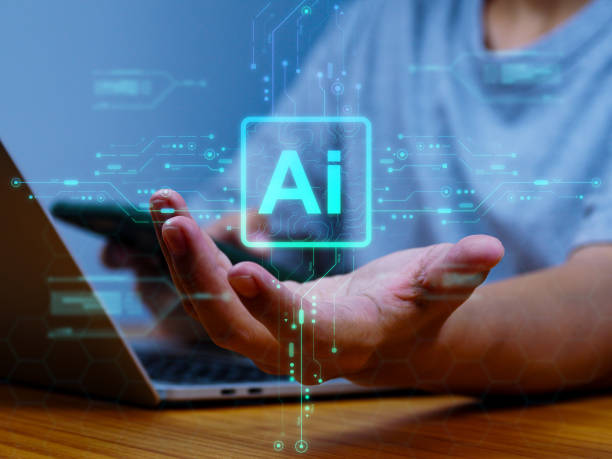
Challenges and Limitations of AI Robots
Despite significant advancements in the field of AI robots, there are still challenges and limitations that hinder the further expansion of this technology.
- High Cost: Designing, building, and maintaining AI robots typically involves high costs.
This cost includes purchasing hardware components, software development, and hiring specialists.
For this reason, the use of AI robots is not cost-effective in some industries and applications. - Need for Large Data: Training AI robots requires a large amount of data.
Collecting, labeling, and processing this data is time-consuming and expensive.
Furthermore, if the training data contains errors or noise, the robot’s performance will also be affected. - Ethical Issues: The use of AI robots raises new ethical concerns.
For example, who is responsible for the decisions made by robots?
Can robots independently make decisions that affect human lives?
How can the misuse of AI robots be prevented? - Security: AI robots can be vulnerable to cyberattacks.
Hackers can gain control of robots’ systems by infiltrating them and use them for malicious purposes.
Therefore, ensuring the security of AI robots is crucial. - Technical Limitations: Despite significant advancements, technical limitations still exist in the field of AI robots.
For example, robots still cannot fully understand and react to human emotions.
Furthermore, robots still face challenges in solving complex and unpredictable problems.
To overcome these challenges and limitations, further research and the development of new technologies are needed.
With technological advancements, AI robots are expected to play a more significant role in human lives.
Does your current corporate website not reflect your brand’s credibility and strength as it should? RasaWeb solves this challenge for you with professional corporate website design.
✅ Increase visitor credibility and trust
✅ Targeted attraction of more customers
⚡ Click for a free consultation!
The Future of AI Robots
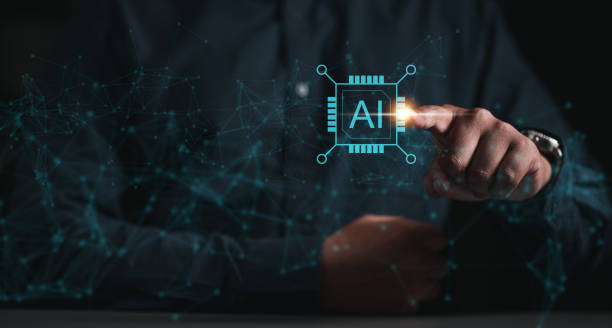
The Future of AI Robots
The future of AI robots is very bright and full of potential.
With continuous advancements in AI, robotics, and other related technologies, AI robots are expected to play a much more significant role in human lives in the future.
Below, we highlight some key trends shaping the future of AI robots:
- Increased Intelligence: Future robots will be smarter and capable of performing more complex tasks.
They will be able to continuously learn and improve their performance using advanced machine learning algorithms.
Furthermore, they will be able to better understand their surroundings using advanced sensors and make decisions independently. - Expanded Applications: AI robots will be utilized in various industries and fields in the future.
They will play a significant role in industry, medicine, agriculture, transportation, customer services, and many other areas.
For example, in medicine, robots can be used for precise surgeries, disease diagnosis, and personalized care.
In agriculture, robots can be used for planting, cultivating, and harvesting crops. - Human-Robot Collaboration: In the future, human-robot collaboration will increase.
Robots will act as human collaborators in work environments and personal lives.
They can perform repetitive and hazardous tasks, helping humans focus on creative and strategic tasks. - Autonomous Robots: Autonomous robots will be able to operate in complex and dynamic environments without human intervention.
They can understand their surroundings and make appropriate decisions using sensors and AI algorithms.
Autonomous robots will have applications in fields such as transportation, search and rescue, and space exploration. - Development of Social Robots: Social robots will be able to interact with humans and establish social relationships.
They can act as companions, mentors, and therapists in home and social environments.
However, the development of AI robots requires attention to ethical, security, and social issues.
It must be ensured that robots are used responsibly and in the interest of humans.
Impact of AI Robots on the Job Market
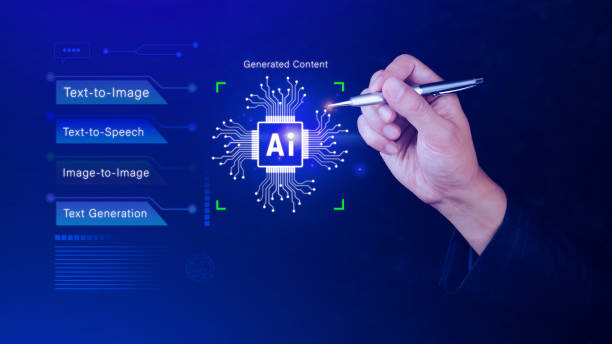
Impact of AI Robots on the Job Market
One of the main concerns regarding the expansion of AI robots is its impact on the job market.
Some people worry that robots will replace humans in many jobs, leading to increased unemployment.
While these concerns are not unfounded, the impact of AI robots on the job market is more complex.
AI robots can perform repetitive, tedious, and dangerous tasks, helping humans focus on creative and strategic tasks.
This can lead to increased productivity and reduced costs.
However, in some jobs, robots can replace humans.
Jobs involving repetitive and automatable tasks are more at risk of being replaced by robots.
These jobs include clerical jobs, manufacturing jobs, and some service jobs.
On the other hand, the expansion of AI robots can create new jobs.
New specialists are needed for the design, construction, maintenance, and training of robots.
Furthermore, with increased productivity and reduced costs, new opportunities for economic growth and job creation emerge.
For example, the expansion of e-commerce has led to the creation of new jobs in logistics, digital marketing, and customer service.
To mitigate the negative impact of AI robots on the job market, governments and organizations must take action.
These actions include investing in education, providing skills training for new jobs, and supporting entrepreneurship.
Additionally, policies must be adopted to support individuals who lose their jobs.
These policies include providing unemployment insurance, retraining, and assistance in finding new jobs.
Overall, the impact of AI robots on the job market will be both positive and negative.
By adopting appropriate policies, the benefits of AI robots can be harnessed, and their negative effects can be reduced.
AI Robots and Home Automation
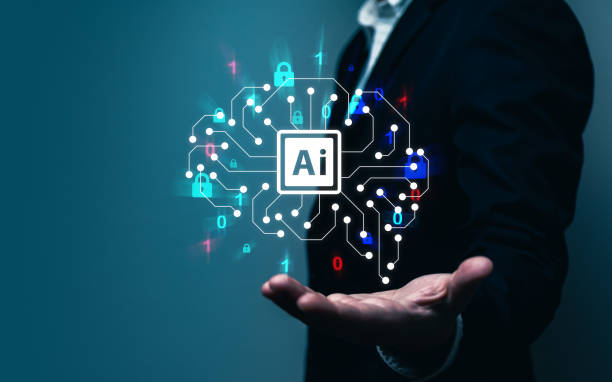
AI Robots and Home Automation
Home automation is one of the areas where AI robots play a significant role.
By using AI robots, many daily tasks at home can be automated, making life easier and more convenient.
Smart robotic vacuum cleaners are a common example of AI robots in home automation.
These robots can automatically vacuum the house and navigate around obstacles.
They use sensors and AI algorithms to create a map of the house and find the optimal path for vacuuming.
Smart robotic lawnmowers can also automatically trim yard lawns.
These robots use sensors and AI algorithms to detect yard boundaries and automatically trim the grass.
They can also automatically return to their charging station.
Smart lighting systems can also automatically adjust home lighting using AI robots.
These systems can detect natural light levels using light sensors and automatically adjust artificial lighting.
They can also use AI algorithms to adjust lighting patterns based on the time of day and the activities of the house residents.
Smart heating and cooling systems can also automatically regulate home temperature using AI robots.
These systems can detect home temperature using temperature sensors and automatically adjust the temperature of heating and cooling systems.
They can also use AI algorithms to adjust temperature patterns based on the time of day and the activities of the house residents.
In addition, AI robots can play a significant role in home security.
Smart security systems can monitor the house using cameras and sensors and automatically notify residents and the police in case of any incident.
They can also use facial recognition algorithms to identify strangers and alert house residents.
AI Robots in Medicine
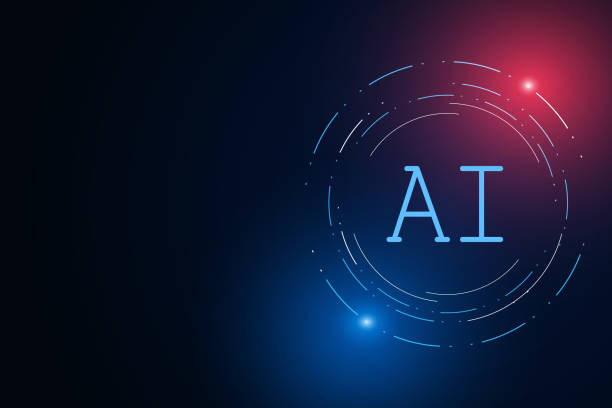
AI Robots in Medicine
AI robots are increasingly transforming the field of medicine, promising improved accuracy, efficiency, and access to healthcare.
AI robots assist physicians in diagnosing diseases, personalizing treatments, and streamlining surgical procedures.
The use of AI robots in #medicine is remarkable and growing.
One of the main applications of AI robots in medicine is disease diagnosis.
Machine learning algorithms can analyze large amounts of medical data, such as medical images, electronic health records, and laboratory results, to diagnose diseases with greater accuracy.
For example, AI robots can be used for cancer diagnosis from radiology images such as mammograms and CT scans.
AI robots can help physicians diagnose diseases earlier and more accurately, leading to improved outcomes for patients.
This process is done by examining data and identifying patterns that may not be directly visible to physicians.
Artificial Intelligence
Another important application of AI robots in medicine is treatment personalization.
Machine learning algorithms can use patient data such as genomics, lifestyle, and medical history to develop personalized treatments.
This can lead to more effective treatments and fewer side effects.
For example, AI robots can be used to identify patients who are likely to respond to a particular drug or are at risk of side effects.
Data Analysis
Surgical robotics is another promising area where AI robots play a role.
Surgical robots can perform complex surgeries with greater precision and control.
This can lead to reduced incision sizes, less bleeding, and faster recovery times.
Surgical robots can be used for a wide range of surgeries, including cardiac surgery, orthopedic surgery, and neurosurgery.
| Application | Description | Advantages |
|---|---|---|
| Disease Diagnosis | Analyzing medical data for more accurate diagnosis | Earlier diagnosis, higher accuracy |
| Treatment Personalization | Developing personalized treatments based on patient data | More effective treatment, fewer side effects |
| Surgical Robotics | Performing complex surgeries with greater precision and control | Reduced incision size, less bleeding |
Are you concerned about your online store’s low conversion rate and not achieving your desired sales?
RasaWeb is your specialized solution for having a successful online store.
✅ Significant increase in conversion rates and sales
✅ Professional and user-friendly design to attract customer satisfaction
⚡ Ready for an online sales revolution? Get a free consultation!
AI Robots and Transportation

AI Robots and Transportation
Transportation is another area where AI robots play a significant role.
Self-driving cars are one of the most prominent examples of AI robots in transportation.
These vehicles can travel on roads and take passengers to their destinations without the need for a human driver.
#AI robots play a crucial role in these vehicles.
Self-driving cars use sensors, cameras, and AI algorithms to understand their surroundings.
They can detect road lines, traffic signs, other vehicles, and pedestrians, and decide how to move based on that.
Self-driving cars have many advantages.
They can lead to a reduction in accidents, traffic congestion, and air pollution.
Additionally, they can help people with disabilities and the elderly reach their destinations easily.
In addition to self-driving cars, AI robots are also used in other sectors of transportation.
At airports, AI robots can be used for baggage screening, providing services to passengers, and managing air traffic.
In ports, AI robots can be used for unloading and loading containers, managing warehouses, and controlling ship traffic.
In public transportation systems, AI robots can be used for route planning, fleet management, and providing information to passengers.
AI robots can also be used to improve transportation safety and efficiency.
For example, intelligent traffic management systems can use AI algorithms to manage traffic in real-time and prevent accidents.
Weather forecasting systems can also use AI algorithms to predict weather conditions with greater accuracy and help drivers and pilots make safer decisions.
The impact of AI robots on transportation has been remarkable.
Ethical Issues Related to AI Robots

Ethical Issues Related to AI Robots
The development and use of AI robots raise important ethical concerns.
One of these issues is accountability.
If an AI robot makes a decision that causes harm, who will be responsible?
Will the robot’s manufacturer, the robot’s user, or the robot itself be responsible?
Another issue is privacy.
AI robots can collect a lot of information about individuals.
This information can include personal data, financial data, and information related to online activities.
How can the misuse of this information be prevented?
The third issue is discrimination.
AI robots can discriminate based on the data they have been trained with.
For example, an AI robot trained to hire people may unconsciously discriminate based on gender or race.
In this regard, AI offers numerous #solutions.
The fourth issue is transparency.
How can we ensure that AI robots operate transparently?
How can we understand how an AI robot made a decision?
To resolve these ethical issues, new laws and regulations need to be enacted.
These laws and regulations must address accountability, privacy, discrimination, and transparency.
Furthermore, there is a need for public education and awareness about ethical issues related to AI robots.
The use of AI robots has many advantages, but ethical issues related to them must also be considered.
By formulating appropriate laws and regulations, the benefits of AI robots can be realized, and their negative impacts can be minimized.
Frequently Asked Questions
| Question | Answer |
|---|---|
| What is an AI robot? | An AI Robot is a machine capable of understanding its environment, reasoning, learning, and making decisions to perform tasks autonomously. |
| What is the difference between conventional robots and AI robots? | Conventional robots perform repetitive tasks based on pre-programming, while AI robots can learn from experience, interact dynamically with their environment, and even behave in a way that resembles human intelligence. |
| What are the main applications of AI robots? | They are used in industries (manufacturing, assembly), medicine (surgery, diagnosis), services (customer support, home), exploration (space, underwater), and many other fields. |
| What technologies are used in the construction of AI robots? | Machine Learning, Computer Vision, Natural Language Processing, Deep Learning, and Robotics are among the key technologies. |
| Can AI robots have emotions? | Currently, robots do not have emotions in the human sense. They can identify and react to emotions, but they do not experience emotions themselves. |
| What are the main challenges in the development of AI robots? | Safety, reliability, ethics, autonomy, adaptability to complex environments, and natural human interaction are important challenges. |
| How do AI robots learn? | They are typically trained using large volumes of data, machine learning, and deep learning algorithms to identify patterns and make decisions. |
| Examples of AI robots in everyday life? | Smart robotic vacuum cleaners, customer support chatbots, self-driving cars, and surgical robots in hospitals. |
| Are AI robots a threat to human jobs? | Some repetitive jobs may become automated, but at the same time, robots can increase productivity and create new jobs in the development, maintenance, and supervision of these systems. |
| How is the future of AI robots predicted? | They are expected to become smarter, more autonomous, capable of performing more complex tasks, and to interact more closely with humans in various environments. |
And other advertising agency services by RasaWeb in the field of advertising
- Smart Link Building: Professional optimization to increase website traffic using precise audience targeting.
- Smart Advertising Campaign: A dedicated service for growth in customer behavior analysis based on proprietary programming.
- Smart Direct Marketing: Transform your click-through rate with the help of Google Ads management.
- Smart Data Analysis: A combination of creativity and technology to attract customers through proprietary programming.
- Smart Direct Marketing: An innovative service to increase click-through rates through attractive UI design.
And hundreds of other services in the field of internet advertising, advertising consultation, and organizational solutions.
Internet Advertising | Advertising Strategy | Advertorial
Resources
Digiato: The Future of AI
Zoomit: Applications of AI Robots
ISNA: Latest Advancements in AI
Tasnim News: Challenges of Robotics and AI
? To advance your business in the digital space, RasaWeb Afarin Digital Marketing Agency is your trusted partner. With our services, from responsive website design to SEO optimization and social media management, your path to success will be smoother.
📍 Tehran, Mirdamad Street, next to Central Bank, Southern Kazeroun Alley, Ramin Alley, No. 6


